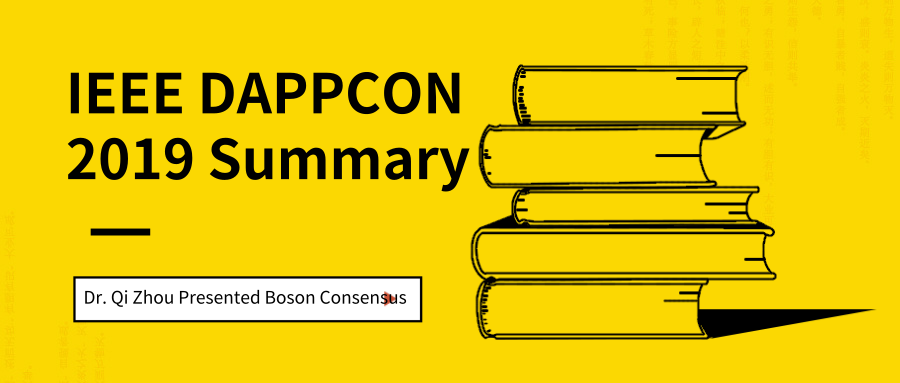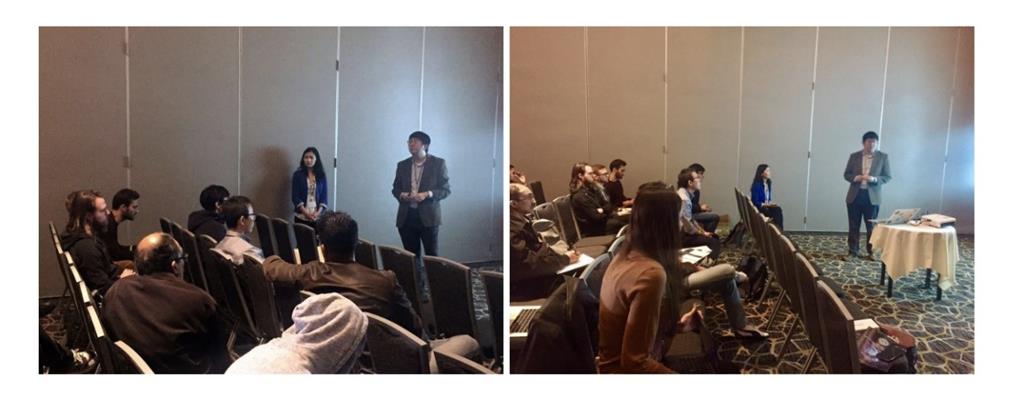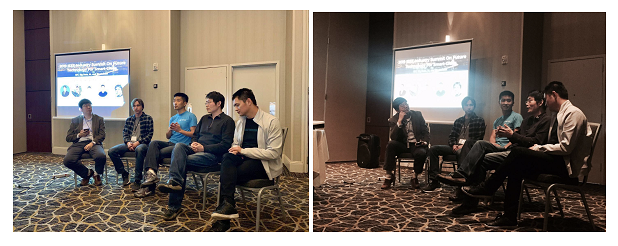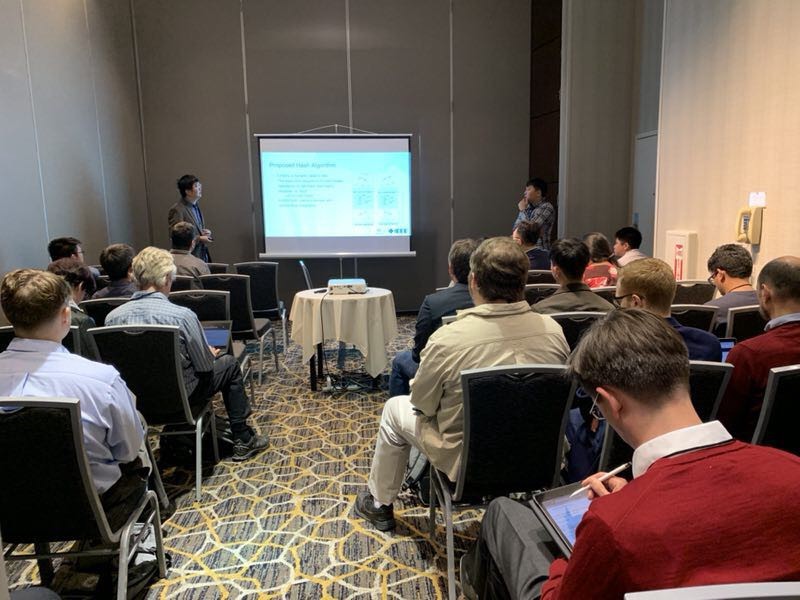SAN FRANCISCO, CA / ACCESSWIRE / April 12, 2019 / 2019 IEEE Industry Summit On Future Technology held from April 6th to 8th in Silicon Valley, USA. The summit focuses on IoT, big data, AI, and blockchain technology, bringing together city leaders, planners, professionals, and researchers from around the world.

IEEE refers to the Institute of Electrical and Electronics Engineers and it was established on January 1, 1963. IEEE is the world's largest association of technical professionals with more than 423,000 members in over 175 countries around the world. IEEE publishes a variety of magazines, journals, and books every year, holding at least 300 professional conferences.
April 06, Dr. Qi Zhou, founder and CEO of QuarkChain, was invited to attend the summit. He delivered keynote speeches at blockchain break-out rooms. In the audience, there are researchers from industry including VMware, BMW, Equinix, and from top universities in US, Germany, Austria, Italy, UK, etc.

Dr. Qi Zhou gave a presentation on "Boson Consensus: A Scalable Blockchain Sharding Consensus". Dr. Zhou introduced that with partitioned sub-states and the operations (transactions) to change the sub-states (including both in-shard transactions and cross-shard transactions), the next major question is how to implement an efficient system to store the sub-states and process the transactions. There are two native consensus algorithms to the sharded blockchain.
Naive Consensus 1: Single Blockchain with Large Blocksize
However, large block size will take considerable time to propagate 1 GB block from one BP to the rest of BPs. Thus, the probability of forks can be dramatically increased. Further security issue and the waste of hashpower will also be resulted from Native Consensus 1 solution.
Naive Consensus 2: Multiple Blockchains In Parallel
However, the system will suffer from an issue we called hashpower dilution by adopting native consensus 2. PoSW consensus algorithm, exclusively developed by QuarkChain, enables the two layers of blockchains to achieve security, scalability, and decentralization simultaneously, storing the sub-states and processing the transactions.
Boson consensus is a class of consensus algorithms based on the hash power distribution. The hash power adjustment mechanism enables the hash power to be distributed among the shards flexibly. Hashpower reuse technique is developed to protect the newly added shards where the hash power is limited in order to enhance the security of the whole network. Relying on Boson consensus, a system structure of root chain-shards is able to be successfully implemented. The root chain confirms all blocks from sharded blockchains and Boson consensus is responsible for distributing the hash power between the root chain and the shards.

Additionally, Dr. Qi Zhou focused on discussing the incentive allocation of blockchain producers and fork-selection rules. He introduced a core solution called rootchain-first rule, i.e., based on Boson consensus algorithm to allocate hashpower so that more hashpower is allocated to root chain. The transaction is secured by the rootchain's proof. Newly added shards with limited hash power will also be protected by root chain immediately, while avoiding hash power attacks at their early stage.
QuarkChain mainnet has accomplished various functions, including multi-native-tokens, various consensus algorithms, and different mining algorithms. More importantly, QuarkChain has successfully implemented state sharding technology that is considered as the most challenging technique among all sharding technologies. State sharding technology and innovative cluster design enable more storage space and computing resources to be saved in each node on shards, achieving high-efficiency of the whole network eventually.
Currently, IEEE has a great impact on industry standards and academic leading-edge research. Dr. Qi Zhou's paper on the QuarkChain Boson Consensus has also been published by IEEE.
On the same day, Dr. Qi Zhou also hosted a seminar on the future of blockchain industry. Dr. Zhou and other attendees discussed the future application and development of blockchain.

Future blockchain applications will be developed around these two directions.The first direction is to rely on smart contract technology and low-cost credits extended by extremely low marginal costs, gradually covering more areas requiring low-cost credits, and providing assistance for the development of financial technology. This requires to address multiple issues, including real-time, high scalability, low latency, and high throughput. QuarkChain provides solutions to these problems by adopting state sharding technology. There will be more opportunities in the future.
Secondly, with further penetration of blockchain technology, enterprises and industries in the fields of transaction information, logistics traceability, medical records, and identity verification are able to establish information security by relying on blockchain techniques to guarantee traceability and non-tamperability. In this way, the interoperability among various blockchain networks also becomes a new development trend in the future. QuarkChain's high flexibility enables compatibility with the existing public chains by adding new shards. We provide hash power protection for newly added shards and on-chain information mobility will be easily achieved by QuarkChain's two layered blockchains design: root chain and shards. It can be considered as an alternative solution for interoperability.

QuarkChain and Ethereum conducted one training session, focusing on companies and academic researchers interested in blockchain industry, to talk about blockchain challenges and future solutions on April 7, 2019. The audience includes researchers from industry including VMware, BMW, Equinix, and from top universities in the US, Germany, Austria, Italy, UK, etc.
FYI
Website
https://www.quarkchain.io
Telegram
https://t.me/quarkchainio
https://twitter.com/Quark_Chain
Medium
https://medium.com/quarkchain-official
https://www.reddit.com/r/quarkchainio/
https://www.facebook.com/quarkchainofficial/
Contact:
support@quarkchain.org
Company Website:
quarkchain.io
SOURCE: QuarkChain
View source version on accesswire.com:
https://www.accesswire.com/541788/Dr-Qi-Zhou-Presented-Boson-Consensus-at-IEEE-DAPPCON-2019
